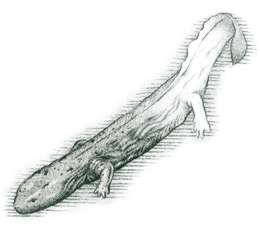 Wayah
Bald Area
Wayah
Bald Area  Wayah
Bald Area
Wayah
Bald Area [Fig. 32(9), Fig. 34(4)] The Wayah Bald Area became part of the Nantahala National Forest domain soon after the passage of the Weeks Act in 1912. A stone observation tower at the summit of the area's highest point, Wayah Bald (5,385 feet), frames the awesome vistas of the Great Smoky and Unicoi mountains towering above the Nantahala and Little Tennessee river valleys. Built in 1937 by the Civilian Conservation Corps, the tower was originally used for fire detection and rose 60 feet above the summit. Over the years, water damaged the structure, and in 1947 the top two floors were removed; in 1983, a hemlock-beam and cedar-shake roof was added. The bald continues to be a popular destination for hikers and those seeking the natural beauty so evident in May and June when the rhododendron, azaleas, and other wildflowers bloom. (For more on balds, see the Natural History of the North Carolina Mountains.)
Evidence of Indian use of the bald as hunting grounds dates back to 300 b.c. Wayah is a Cherokee word for "wolf," an appropriate name prior to the arrival of European settlers. Red wolves roamed in abundance here until the middle of the nineteenth century when a bounty on them led to their eradication.
Though Wayah is called a bald, strictly speaking the bald area is rather small. It is surrounded by oaks, though they are stunted and pruned by the strong winds and icy winter weather. Birds along the bald include late-spring and summer varieties such as the ruffed grouse, rufous-sided towhee, white-breasted nuthatch, ovenbird, veery (Hylocichla fuscenscens), solitary vireo (Vireo solitarius), scarlet tanager (Piranga olivacea), golden-crowned kinglet (Regulus satrapa), a variety of warblers, and sometimes the yellow-bellied sapsucker (Sphyrapicus varius).
The Appalachian Trail and Bartram Trail cross here, and a number of shorter trails radiate from the area (see Long Trails).